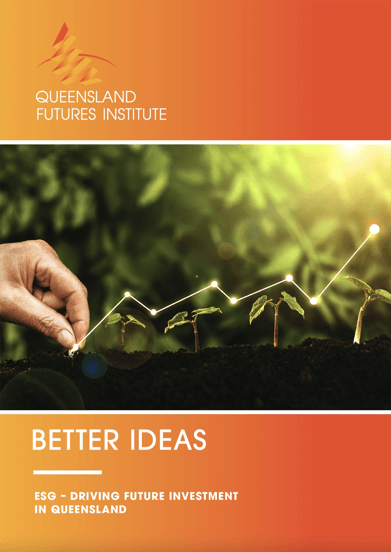 |
Mike Girard
- As of July 2022, the size of global sustainability debt markets was approximately $5 trillion.
- Queensland Treasury Corporation is the state’s central financing authority which works very closely with Queensland Treasury and the Queensland Government to raise capital and lend money to local governments and Government Owned Corporations. Our balance sheet size is approximately $100bn.
- In 2017, QTC issued its first green bond, and today remains a leading semi-government issuer of green bonds in Australia, with around $7 billion worth of green bonds on issue. This comprises about 6% ofQTC’s debt on issue. QTC also has nearly $17bn of assets with green credentials and expects this to grow further. The 2017 green bond issuance was $750mn and was oversubscribed, and more recently last year, QTC issued $3bn in bonds with maturities ranging from 2024 to 2032. This makes QTC one of the largest green bond issuers compared to other states. In 2021, QTC also collaborated with theQueensland Government on its inaugural Sustainability Report. Among Australian states, Queensland was one of the first to release a dedicated whole of state Sustainability Report.
|
 |
James Lane, State General ManagerBusiness Banking, ANZ
- We have a number of transformational opportunities happening right now in Queensland, namely the Brisbane 2032 Olympics and Paralympics. This will benefit not only Southeast Queensland but also the rest of the State. Another is the Queensland Energy and Jobs Plan, which will transform the entire electricity grid which will drive investment to support 22 GW of renewable energy, 7 GW of pumped hydro and 1,500 km of transmission.
- To achieve this, we require transformational policies and collaboration between government, the private sector and communities. There are several initiatives currently underway to support this. This includes $520m from Queensland Treasury invested in industries with other investors on major projects. This is an example of our significant investment facilitation providing investment assistance for bespoke commercial opportunities.
- A recent example of this was implemented with Fortescue Future Industries in October to deliver one of the world’s largest hydrogen equipment manufacturing hubs in Gladstone. Another example is the Queensland Pacific Metals Tech, which received significant investment project status to support a $2bn energy chemicals hub in Townsville. The Housing Investment Fund mentioned earlier is another example of collaboration, between Australian Retirement Trust and QIC, and Brisbane Housing Company to deliver a pipeline of 1,200 new social and affordable homes.
- These reflect the strong engagement between government, the private sector and communities which is driving investment in our State to help transform where we go.
|
 |
Kate Farrar
- Brighter Super was formed after merging LGIA Super, Energy Super and more recently Suncorp Super. The fund now has 260,000 members and $130bn funds under management.
- ESG is broader than climate. Brighter Super has recently improved its ESG policy, using principles which position ESG as a value driver rather than just something driven by values. Brighter Super’s primary duty is to deliver outcomes which are in members’ best financial interests, which involves considering long-term risks.
- Brighter Super utilises an outsourced approach and work with investment managers. As such, the most important role they play is in the review of managers’ investment process, which has been rapidly advancing in sophistication.
- Active stewardship is also a key component of the ESG policy; divestment is not used as a strategy, nor does Brighter Super screen (except in socially responsible investment products).By being involved in a company’s development instead of divesting, there is an opportunity to earn an active alpha component of return.
- There is also an important role for Brighter Super to play in the social transition – particularly in coal communities – where ensuring that a just transition forms a core tenant of Brighter Super’s stakeholder engagement.
|
 |
Tom Metcalfe
- CleanCo is one of three government owned corporations and holds a portfolio across electricity generation and retailing in the state. This comprises 1,000MW of generation – including the largest pumped hydro facility in the state – Wivenhoe (500MW), and about 150MW of hydro generation in Northern Queensland.
- CleanCo has another 1,000MW of wind and solar under long term power purchase agreements. These projects are under construction and expected to go into service in the next couple of years. The electricity industry clearly plays a large role in delivering the environmental elements of ESG.
- The Queensland Government’s Renewable Energy target is 50% by 2030. In the last 12 months, about21% of the energy that this state used was generated from renewable sources. This means an additional approximately 10GW of generation will be needed, on top of the current 7GW which is comprised of 4GW of roof top solar and 3GW of utility-scale renewables. This will likely require a sizeable buildout to 2030, and an additional tripling of today’s capacity to meet Net Zero targets.
- Electrification is also key to the transition – this will impact many industries such as transportation and agriculture – and ultimately impact the amount of new supply needed. This will put additional demand on firming assets, such as Wivenhoe and Swanbank.
- This demand for green energy is putting pressure on supply chains and developers to deliver the required projects. It is also important to build the transmission required to unlock these projects at optimal locations.This requires working with impacted communities and developing broader engagement strategies to consider how these projects will deliver jobs, economic development, and First Nations engagement.
-
|
 |
Cr Anne Baker
- Our coal mining regions face a transformational change that will be beyond the economic capability of local councils to manage alone and it is important that we plan early for the end of mine life and the global climate change response.
- That is why we are advocating for the creation of a statutory authority to assist Coal mining regions by energising existing community capability, leading collaboration, supporting innovation and ensuring the global benefits of decarbonisation are not achieved at the expense of mining communities.
- The effective management of this change is critical not just for the coal mining regions but for all Local Government Areas supplying to or reliant on the economic output of coal mining.
- Large scale mining and energy/renewable projects bring economic benefits they also bring social impacts that if left unchecked can tear at the fabric of our regional communities.
- ESG plays a vital role in helping local government deal with the impacts associated with resource and energy projects and gives us an opportunity to push for better outcomes for our communities.
- Strong ESG policies and frameworks provide government with the ability to hold companies accountable for their impacts while ensuring social and environment sustainability is at the forefront of their operations.
- For Queensland, if ESG is used correctly and has input from communities that host these projects, it can position Queensland’s resource and energy projects as best in class.
- Doing this will make these projects more viable and an attract ‘Ethical Investors’ which in turn delivers a thriving future for Australia and our regional communities.
-
|





















